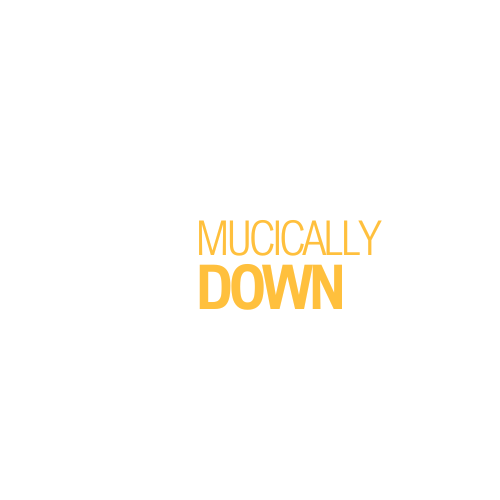Music magazine covers, they’re more than just glossy paper with catchy headlines. They’re a snapshot of the music industry’s pulse at any given moment. A blend of photography, design, and cultural insight, these covers can encapsulate an artist’s persona or a musical era in a single image.
From vintage Rolling Stone editions to contemporary Pitchfork issues, music magazine covers have always been a fascinating intersection of pop culture, art, and journalism. They’ve launched careers, sparked controversies, and, at times, even defined the zeitgeist. Let’s delve into the captivating world of music magazine covers and their undeniable influence on the music industry.
Music Magazine Covers
 Esteemed readers, let’s journey down the various epochs in the evolution of music magazine covers. Reflections of societal and design trends, these covers serve as excellent historiographical tools.
Esteemed readers, let’s journey down the various epochs in the evolution of music magazine covers. Reflections of societal and design trends, these covers serve as excellent historiographical tools.
Iconic music magazine covers didn’t just pop into existence; their emergence stemmed from a combination of bold art direction, powerful photography, and defining cultural moments. A prime example is The Beatles’ 1967 Sgt. Pepper’s Lonely Hearts Club Band on the cover of Rolling Stone. This cover, packed with the Beatles’ larger-than-life characters and colorful collage, promptly became a classic. Similarly, the spotlighting of Nirvana’s Kurt Cobain in an unforgettable 1992 Rolling Stone edition presented the grunge icon in a raw, unfiltered way, reflecting the cultural sentiment of the time. These iconic covers bridged art and music, impacting popular culture significantly.
Shifts in Design Trends
 As music trends ebbed and flowed, so did the design aesthetics of the respective magazine covers. Design trends shifted, subtly or dramatically, reflecting and shaping the musical eras they represented. For instance, the vibrant psychedelia-dominated covers of the 60s and 70s gave way to the minimalist style of the 80s, epitomized by covers like U2’s stark, grayscale Joshua Tree on Rolling Stone. The beginning of the millennium witnessed a surge in digital artistry, seen in Bjork’s otherworldly 2001 Dazed cover. Today, the ever-expanding digital realm continues to push boundaries, with groundbreaking augmented reality covers, notably Janelle Monae’s interactive cover for Electric Lady in 2018. The evolution of music magazine covers, indeed, rides the wave of artistic innovation.
As music trends ebbed and flowed, so did the design aesthetics of the respective magazine covers. Design trends shifted, subtly or dramatically, reflecting and shaping the musical eras they represented. For instance, the vibrant psychedelia-dominated covers of the 60s and 70s gave way to the minimalist style of the 80s, epitomized by covers like U2’s stark, grayscale Joshua Tree on Rolling Stone. The beginning of the millennium witnessed a surge in digital artistry, seen in Bjork’s otherworldly 2001 Dazed cover. Today, the ever-expanding digital realm continues to push boundaries, with groundbreaking augmented reality covers, notably Janelle Monae’s interactive cover for Electric Lady in 2018. The evolution of music magazine covers, indeed, rides the wave of artistic innovation.
The Impact of Music Magazine Covers on Culture
 Music magazine covers serve as a cultural mirror, archiving societal developments and influencing music trends. Their influence extends beyond the realm of music, permeating the fabric of society.
Music magazine covers serve as a cultural mirror, archiving societal developments and influencing music trends. Their influence extends beyond the realm of music, permeating the fabric of society.
The covers of music magazines serve as potent trendsetters in the world of music. For instance, the ‘Rolling Stone’ cover featuring Kurt Cobain of Nirvana in 1992 capitalized on the surge of grunge music. The popularity of the magazine gave the movement mass appeal, fueling its rise and subsequently solidifying its place in the annals of music history. Similarly, covers spotlighting hip-hop watershed moments, such as Dr. Dre’s appearance on ‘The Source’ in 1993 or Nicki Minaj’s transformative ‘Paper Magazine’ cover in 2017, have played influential roles. These instances amplified the music genre’s envelopment into mainstream culture, demonstrating the magazine cover’s inherent power to influence musical progression.
Reflecting Societal Changes
Acting as societal barometers, music magazine covers encapsulate prevailing attitudes, threading the sociocultural fabric of any given time. The visually disruptive Beatles’ Sgt. Pepper’s Lonely Hearts Club Band cover published by ‘Life Magazine’ in 1967 is a quintessential example, reflecting the psychedelic era’s vibrant counterculture.
Analysis of Memorable Music Magazine Covers
An investigation into remarkable music magazine covers unveils a blend of iconic imagery and significant societal representation. Essential elements that are often incorporated include iconography and symbolism, with several groundbreaking covers serving as compelling case studies.
Iconography and symbolism often play crucial roles in music magazine covers. These types of visual communication offer more insight into the music’s message, intent, or the artist’s personality, alluding to more in-depth content than what meets the eye. For instance, the Sgt. Pepper’s Lonely Hearts Club Band album cover by The Beatles employs complex iconography—it’s packed with historic figures, reflecting the diverse influences on their music. On the other hand, the enigmatic image of Kurt Cobain on Rolling Stone hints at the troubled underbelly of grunge through subtle symbolism.

